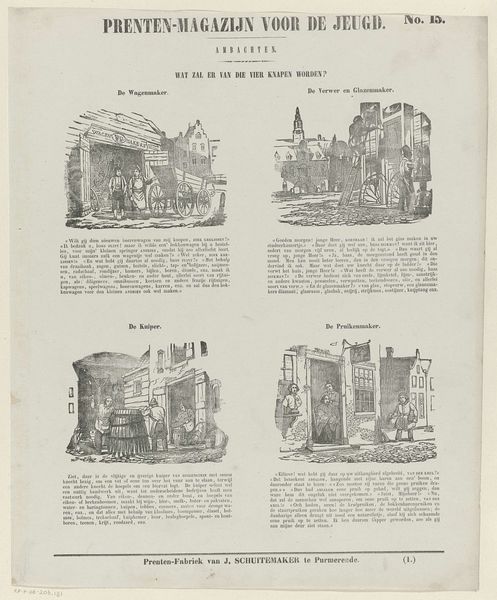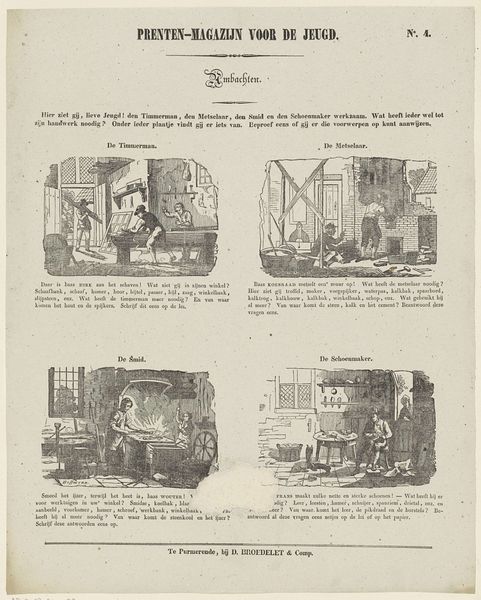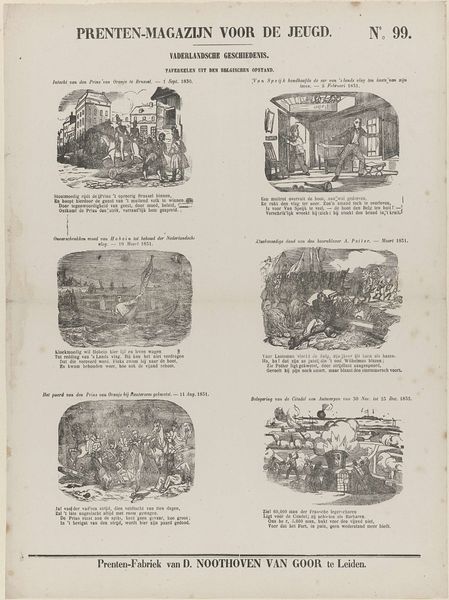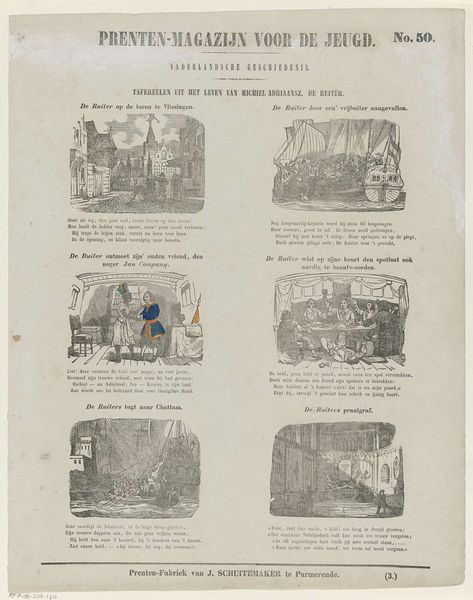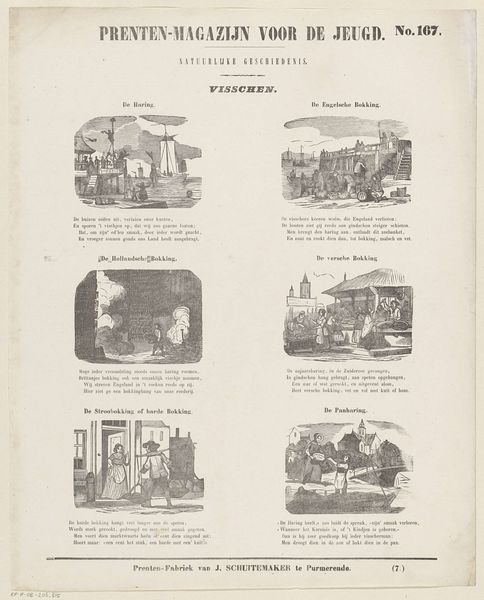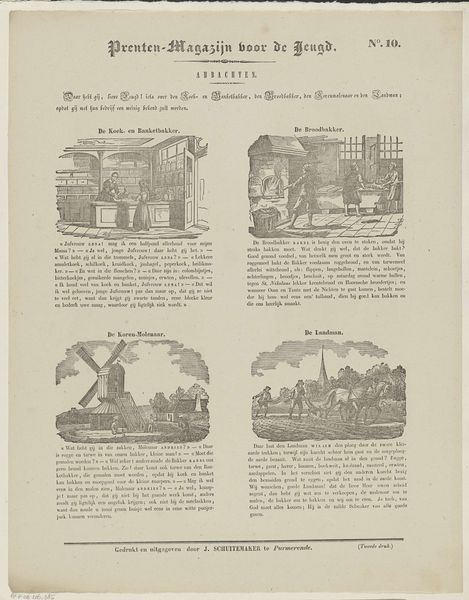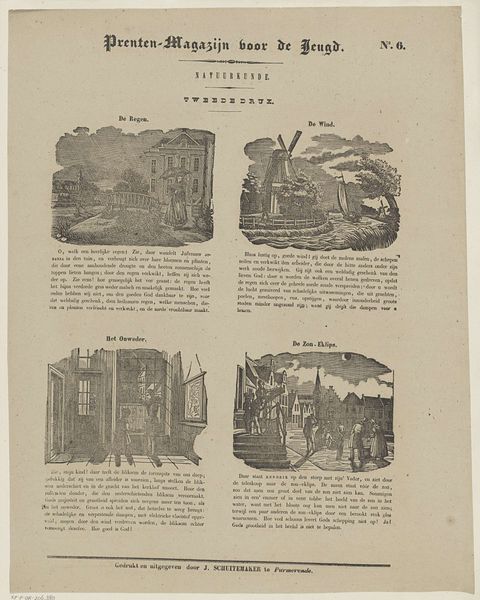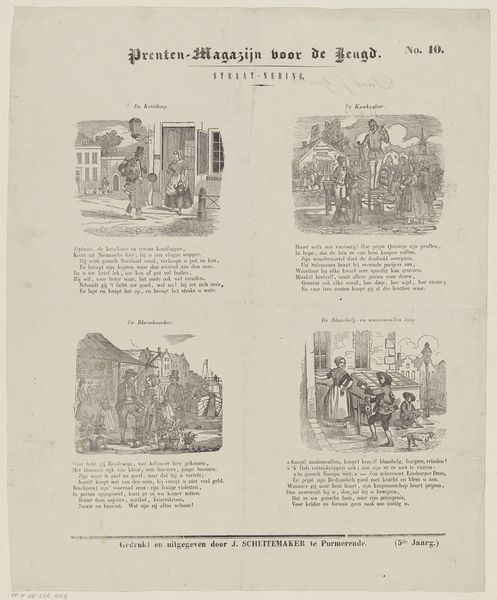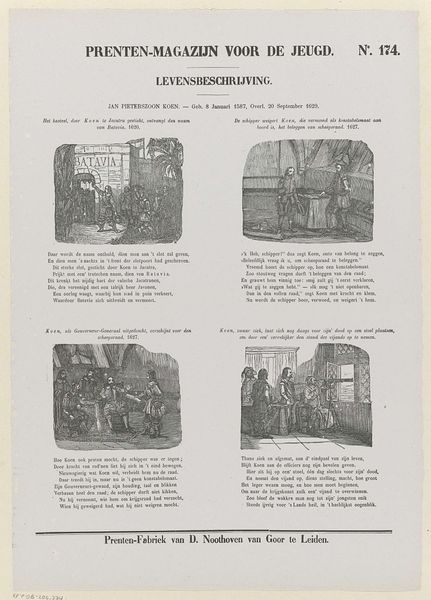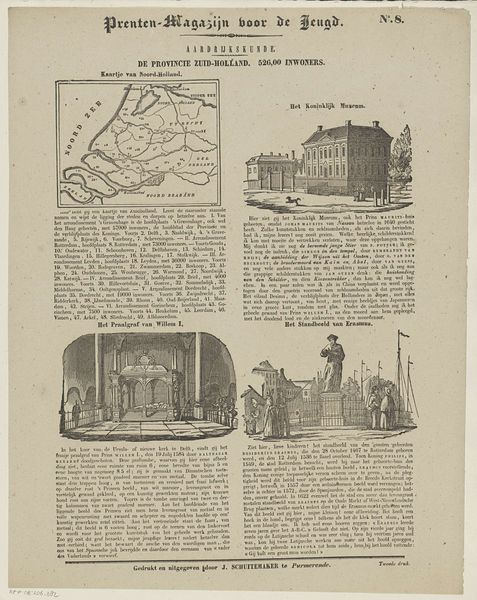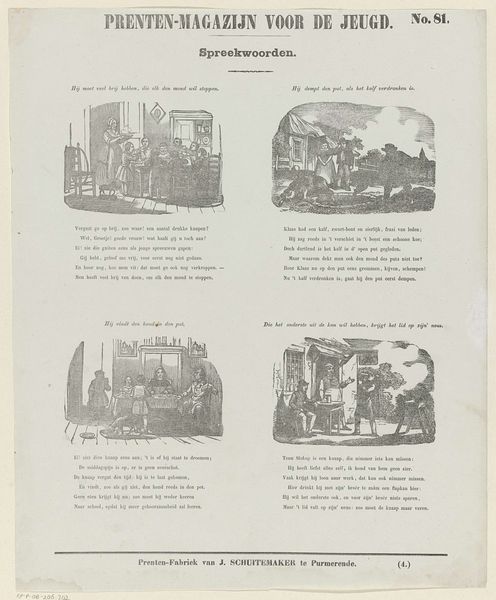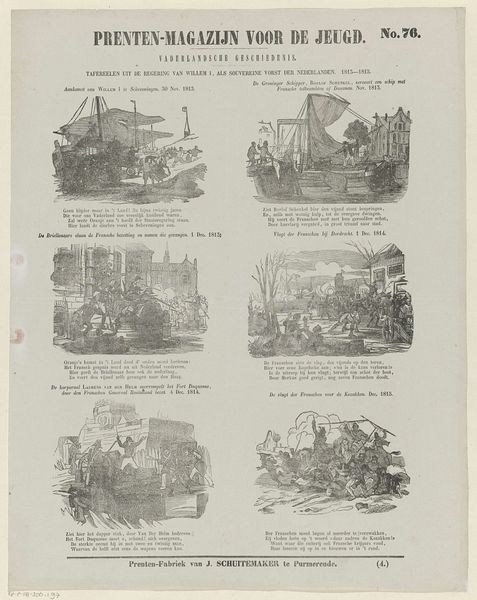
graphic-art, print, paper, engraving
#
graphic-art
# print
#
paper
#
genre-painting
#
engraving
Dimensions: height 414 mm, width 329 mm
Copyright: Rijks Museum: Open Domain
Editor: This is "Wagenmaker, schilder, kuiper en pruikenmaker" by Daniël Broedelet, created between 1839 and 1841. It's a print showcasing different artisanal professions: a wheelwright, painter, cooper, and wig maker. I’m struck by how each scene seems to depict a small, self-contained world. How do you interpret this work in terms of its broader context? Curator: What immediately catches my eye is how this print presents these occupations, not just as jobs, but as integral parts of the 19th-century social fabric. The "Prenten-Magazijn voor de Jeugd" suggests it's intended for young audiences. How do you think this shapes the presentation of labor and societal expectations, particularly during that period? Editor: That's an interesting point. It seems like it’s teaching children about the value of different roles in society. It almost feels like a promotion of the trades? Curator: Indeed, but let's think critically. Whose values are being promoted? Consider the social hierarchies inherent in portraying these specific jobs. Why these four? What does it say about class, accessibility, and the perceived roles of labor in shaping individual identity for the young audience it's targeting? Editor: So, you're saying it's not just about celebrating work, but also about subtly reinforcing social structures? Curator: Exactly! The images normalize the existing economic system. We must ask: who benefits from this depiction? The historical context is crucial. The print appears during the early industrial period, a time of profound economic shifts. This "magazine for youth" seems to almost idealize these older craft-based roles. It could be seen as a way to ease anxieties of these transformations and make these roles feel significant to children’s places within that societal structure. What impact do you think the printmakers were aiming for when constructing the next generation’s viewpoint? Editor: It makes you consider the underlying messages about labor, class, and the intended audience. I hadn't thought of it that way. Thank you for your perspective! Curator: And thank you for prompting me to look at the cultural dimensions involved! These seemingly simple illustrations show so much about the era they came from.
Comments
No comments
Be the first to comment and join the conversation on the ultimate creative platform.
